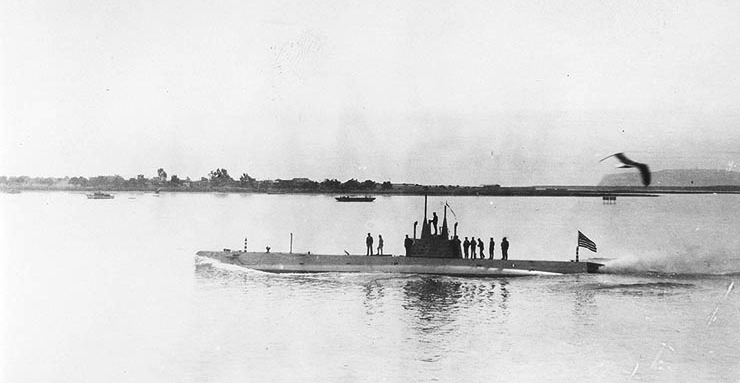 Another in a regular series of fascinating, intriguing, or thoughtful tales about people and places in Nado history — presented by your Coronado Historical Association
Another in a regular series of fascinating, intriguing, or thoughtful tales about people and places in Nado history — presented by your Coronado Historical Association
From the very first days of submarines in the world’s navies, training for their crews has been a crucial part of everything. Submarines are fundamentally different from all other kinds of warships and specialized classes are needed to master cutting-edge technologies and operate safely in a hazardous setting.
Navy submarine training, today, is rightfully concentrated at the sub base at Ballast Point. Large sophisticated buildings devoted to myriad dimensions of training dot the base, nearly all within walking distance of submarines at their piers.
But the first submarine training site in San Diego and, in fact, the first operational submarine training site in the Pacific was in Coronado.
This is not to say the site was fancy, complex or refined it was just a bunch of campaign tents borrowed probably from the Army but it was the first of its kind and another small piece that helped endear Coronado and San Diego to the Navy.
The first submarines to visit San Diego Bay arrived in the spring of 1910 and stayed two years. They were based at the Torpedo Flotilla piers that sat on First Street just south of the Ferry Landing (about where Peohe’s is today). These horse-and-buggy subs, Grampus and Pike, were the first in the Navy and were eye-catching but antiquated.
In 1911, the Navy announced that a new class of much more sophisticated submarines would be built along the West Coast and would be assigned to Coronado. The commander of the Pacific Torpedo Flotilla, Commander Louis C. Richardson, immediately recognized that these new and larger boats would need more crew and that training would be required to operate their more complex machinery.
By late 1911 or early the following year, Richardson had found a site for his submarine school on a vacant block of First Street on the bayshore just north of the Ferry Landing (about where D Avenue intersects First).
 A series of large tents were established and several classes were offered in machinery, diving techniques, and repairs including some courses up to six months in length.
A series of large tents were established and several classes were offered in machinery, diving techniques, and repairs including some courses up to six months in length.
The school ultimately took the name “Camp Richardson” and lasted several years. Sailors, dressed in crisp whites or blues, began to be seen more frequently in Coronado as they arrived either by ferry or by boats from ships anchored in the bay.
Camp Richardson not only trained sailors attached to the new subs but other fleet sailors who were volunteering for submarine duty in droves to win an extra $5 a day in hazardous duty pay (plus a $1 extra for every “successful” dive had to make it back to the surface to count!)
(BL) Photos courtesy U. S. Navy. www.coronadohistory.org © CHA




